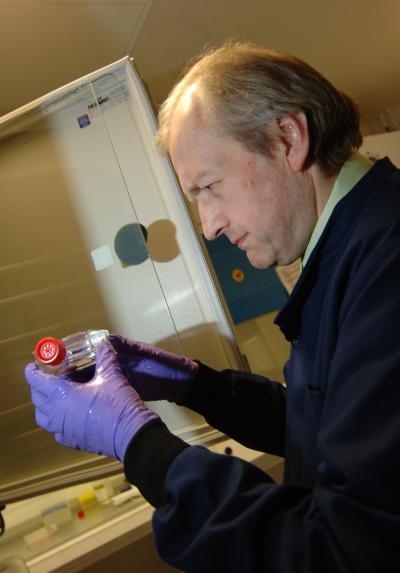A protein called Nrf2,continually moves in and out of the nuclei of human cells to sense the cell's health and vitality and when Nrf2 is exposed to threats to the cell's health, it oscillates faster and activates an increase in the cell's defense mechanism, including raising the levels of antioxidants.
A recent study successfully increased the speed of Nrf2's movement by artificially introducing health beneficial substances – potential components of new superfoods, meaning a new new generation of compounds that could help tackle heart disease and diabetes.
The beneficial substances comprise broccoli-derived sulforaphane and quercetin, which is found in high-levels in onions. Working from that, the team developed new food supplements, which are currently being trialed to decrease risk of developing diabetes and heart disease.

Professor Paul Thornalley, Warwick Medical School.
Credit: University of Warwick
The research team believe they are the first to record the continual movement cycle of Nrf2, which sees the protein oscillate in and out of the cell nucleus once every 129 minutes. When stimulated by a health beneficial vegetable-derived substance Nrf2's cycle sped up to 80 minutes. Lead researcher Professor Paul Thornalley says, "The way Nrf2 works is very similar to sensors in electronic devices that rely on continual reassessment of their surroundings to provide an appropriate response.
"The health benefit of Nrf2 oscillating at a fast speed is that surveillance of cell health is increased when most needed, that is, when cells are under threat. By understanding how this process works and increasing Nrf2's speed without putting cells under threat, new strategies for design of healthier foods and improved drugs can be devised. Current designs may have selected substances with suboptimal if not poor health benefits in some cases."
Commenting on the research, Professor Andreu Palou, coordinator of the EU-funded BIOCLAIMS research program said, "A main nutritional challenge in Europe is to substantiate the beneficial effects of foods that are advertised to the consumers. The approach of the group of Prof Thornalley is opening a fascinating new window."
Published in Antioxidants and Redox Signalling. Source: University of Warwick




Comments